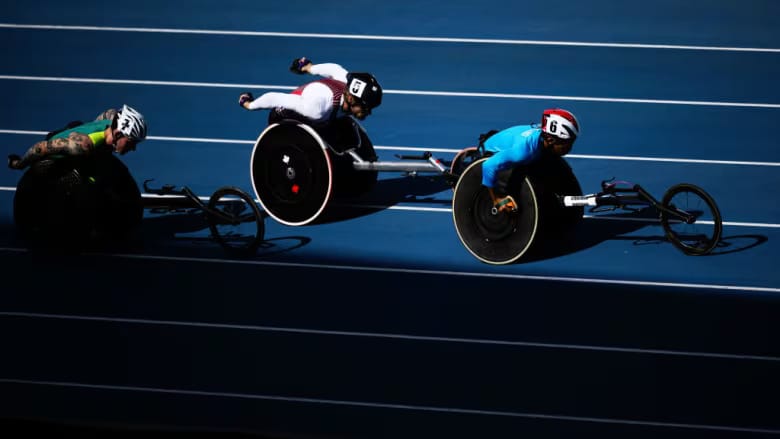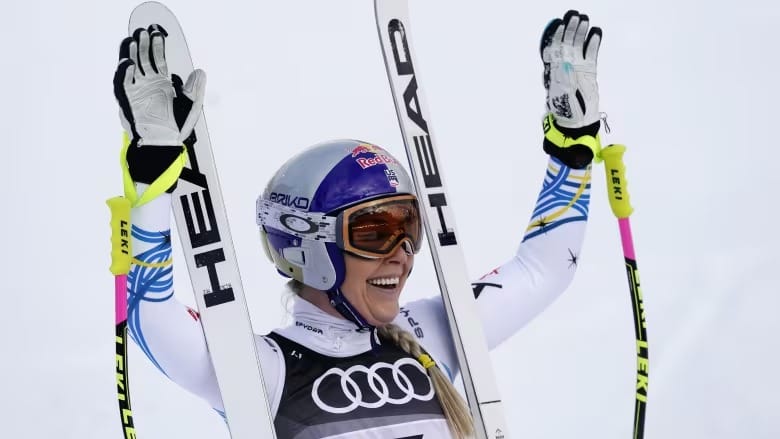A pair of Canadian athlete-engineers is using technology to their advantage at the Paralympics
Smeenk, Hayward leveraging engineering backgrounds to hone equipment for Paris

A wheelchair racer rockets around the track, arms burning in the final push to the finish. A cyclist speeds through the velodrome, teetering on the edge of exhaustion.
In both Paralympic events, lives can change in mere seconds.
"It's human NASCAR at some level," says Canadian wheelchair sprinter Austin Smeenk. "We're going in a circle, seeing how fast we can do it, optimizing everything to be as efficient and effective as possible. It's the real deal."
In able-bodied sprinting, athletes focus solely on their physical performance, aiming for peak fitness in the biggest races.
However, wheelchair racing adds another crucial element—the wheelchair itself.
Suddenly, athletes must optimize both their bodies and their equipment.
Smeenk, a 27-year-old from Oakville, Ont., broke through last year, earning his first major medals—a silver and a bronze—at the world championships. In June, he set the world record in the men’s T35 800- and 400-metre races, achieving the latter feat three times.
The two-time Paralympian, who holds a degree in electromechanical engineering, is acutely aware of how his wheelchair must work in harmony with his body.
While Smeenk believes that the athlete primarily controls speed, he acknowledges that a well-built wheelchair can be the difference between reaching the podium or not.
"We often use the analogy that if you take the same race car and make it lighter, it’s going to go faster. Force equals mass times acceleration; less mass means more acceleration. So we've honed in on making the racing chair as minimalistic as possible," Smeenk said.

Two years ago, Smeenk moved to Victoria to train at the Athletics Canada West Hub at Camosun College, where he collaborates closely with the Camosun Innovates lab to build the best possible chair.
One of his first tasks, along with coach Geoff Harris, was to analyze his equipment from every angle, aiming to eliminate any unnecessary weight.
Smeenk’s engineering background made this process smoother, working alongside Camosun Innovates student and faculty lead Richard Burman.
"I can even design my own parts and say, 'Hey, I've thought about this, can you guys make it?'" Smeenk said. "Being able to communicate at a technical level about the fine details has been instrumental, especially when we're getting down to the nitty-gritty."
In some ways, Paralympic equipment can be compared to bobsleigh or Formula 1—sports where success is heavily influenced by the quality of the equipment, as seen with Germany and Red Bull’s dominance.
However, the Paralympic world lacks the financial backing of F1, and research is spread thin globally. As a result, athletes often compete with vastly different equipment.
The key difference, though, is that Paralympic equipment must be tailored to suit each individual athlete perfectly.
Smeenk emphasized that the individual fit is the second-most important aspect, after the physical chair itself.
"We worked with some of the smartest sports scientists in Canada, if not the world, to determine the optimal angle for my arm to contact the rim, and at what point I want full extension or a slight bend at the elbow," he said.
"We calculated all these ergonomics to ensure the best biomechanics relative to the chair—and that’s what gold medallists do."
Gold medallists like Parapan Am cycling champion Alexandre Hayward, a 27-year-old from Quispamsis, N.B., who is heading to Paris for his first Paralympics.

Like Smeenk, Hayward also holds an engineering degree, which he applies to optimizing his bike.
"I’ve done a lot of aero testing, which I think some people might not be as interested in as I am. It’s a cool opportunity—it's so sports science-based, always looking at numbers, always looking at data. It’s a great mix of my interests," Hayward said.
A former pro hockey hopeful, Hayward broke his neck during a game at 16, resulting in limited feeling in all four limbs.
Hayward has added touchpoints to his bike to ensure his fingers are properly positioned, and he emphasizes the importance of his seat positioning to maximize his performance.
"My saddle makes a big difference because... if you think of my core, legs, and arms as a triangle, I usually have to focus on two at a time when I’m on the track. I can’t have all three firing at once," he explained.
Beyond the bike itself, Hayward noted that equipment choices, such as socks and helmets, can provide "free speed."
"I spend a lot of time reading books by engineers from pro teams or listening to podcasts to learn what able-bodied athletes are doing—they always seem ahead of the game. I try to apply some of that knowledge here and there," he said.
In the end, all these details could make a big difference for Smeenk and Hayward as they pursue their first Paralympic medals in Paris.
And if those potential podium finishes come down to tenths or even hundredths of a second, now you’ll know why.





